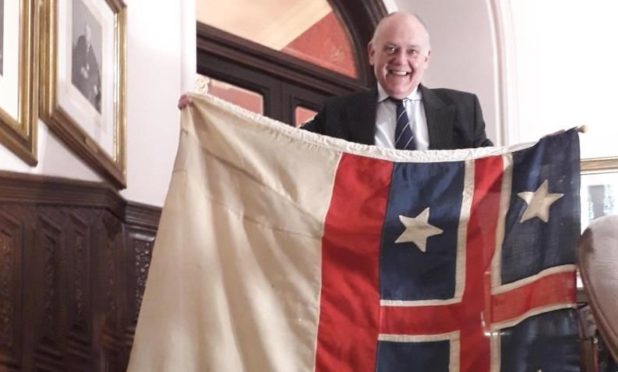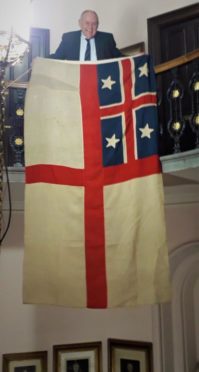The identity of a mysterious flag found in the town house attic by Aberdeen’s lord provost has been uncovered – and the solution is not as simple as many thought.
Earlier this week, Lord Provost Barney Crockett asked for help to work out the origins of the flag, which he found during a lockdown tidy.
A number of e-mails and Facebook comments correctly pointed out that the St George’s Cross with a star-laden design in the canton area is the flag of the United Tribes of New Zealand, also known as the He Whakaputanga flag.
However, this was only the official flag of New Zealand for five years between 1835 and 1840, and does not explain why it may have ended up in Aberdeen in 1924 – the date marked on the box.
Instead, the answer lies in a piece of shipping history.
Sailing solution
In the late 1850s or early 1860s, the flag of the United Tribes of New Zealand was adopted by Shaw and Savill (later known as Shaw, Savill and Albion), a shipping company that specialised in trade with the Antipodes.
It continued as the company’s emblem into the 1880s, when it joined forces with the White Star Line – meaning the flag was probably flown on the Titanic during its doomed 1912 voyage.
But the most important detail for the story of the town house flag comes in 1905, when Shaw, Savill and Albion and the White Star Line became the majority stakeholders in the Aberdeen Line.
Founded in 1825 by George Thompson, himself a future lord provost of the city, the Aberdeen Line provided sailings and steam trips to Canada, Australia, South America and the Mediterranean before ultimately being dissolved in 1957.
The most likely story behind the flag in the Town House is that it came to the city in 1924 for use on an Aberdeen Line ship.
Mr Crockett thanked the public for their help in solving the mystery, saying there was “lots of interest shown and lots of emails received”.

